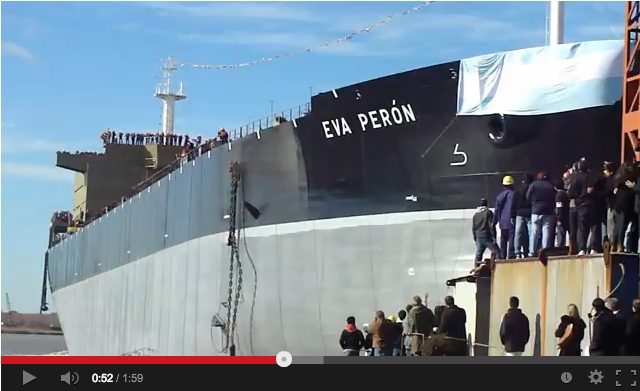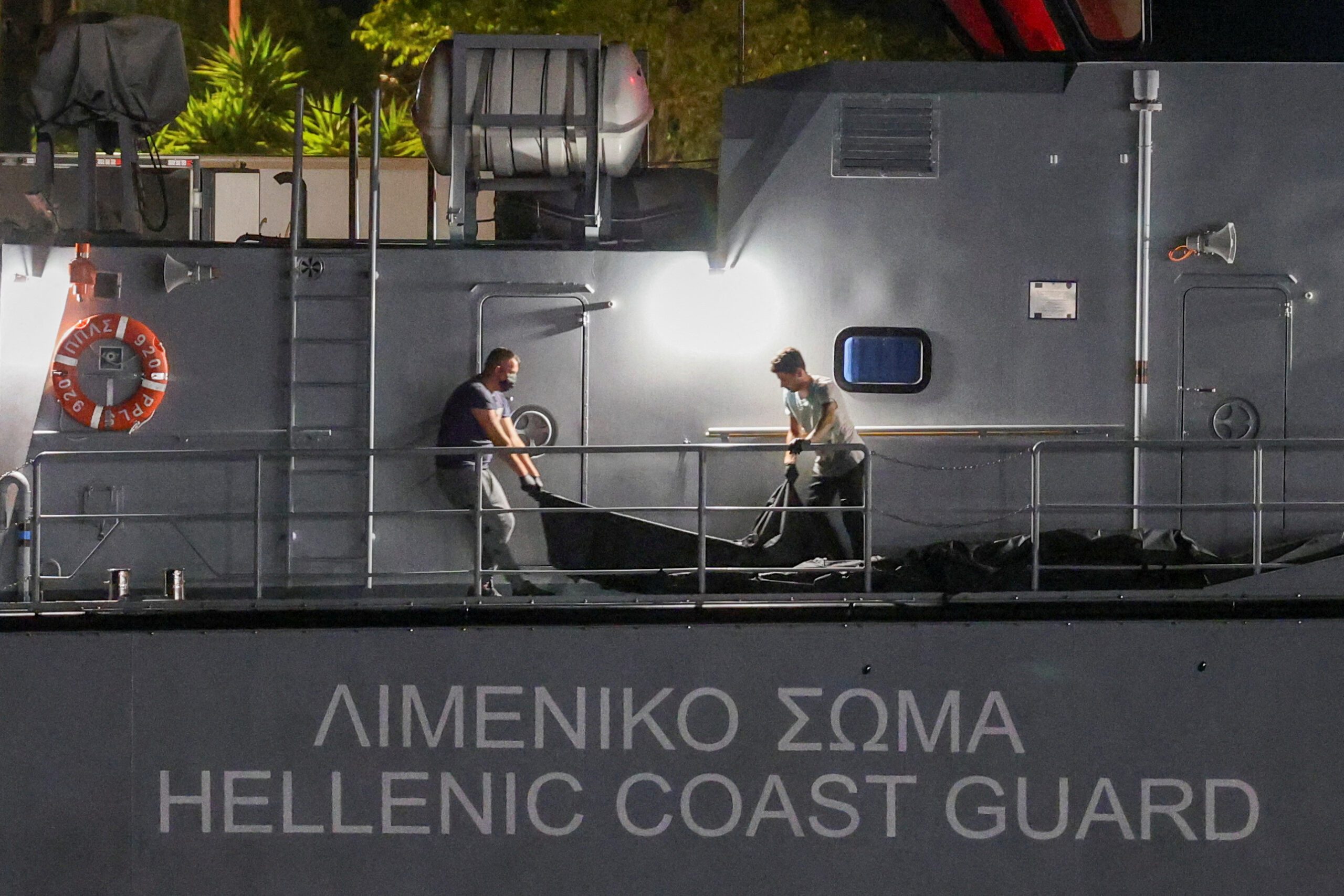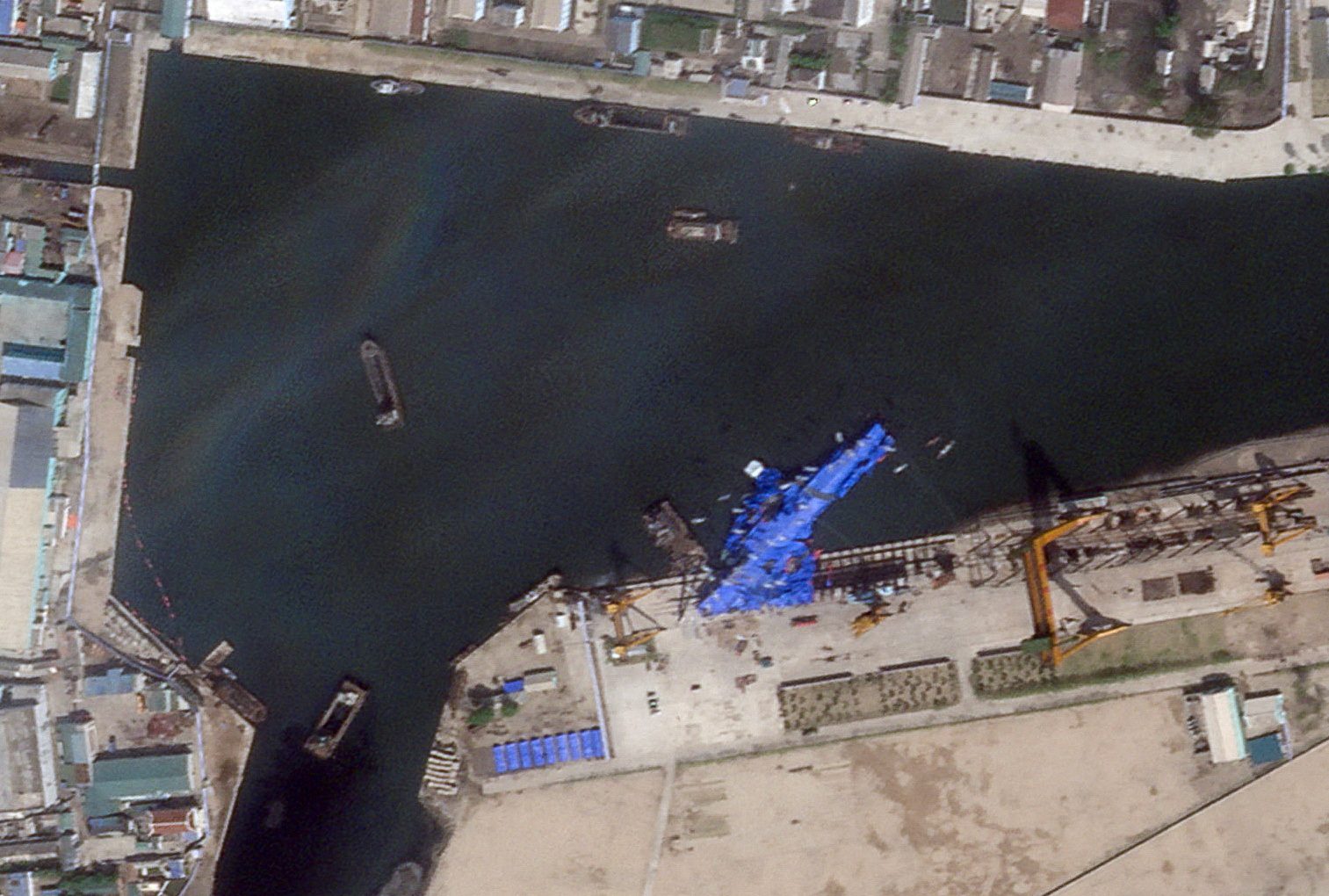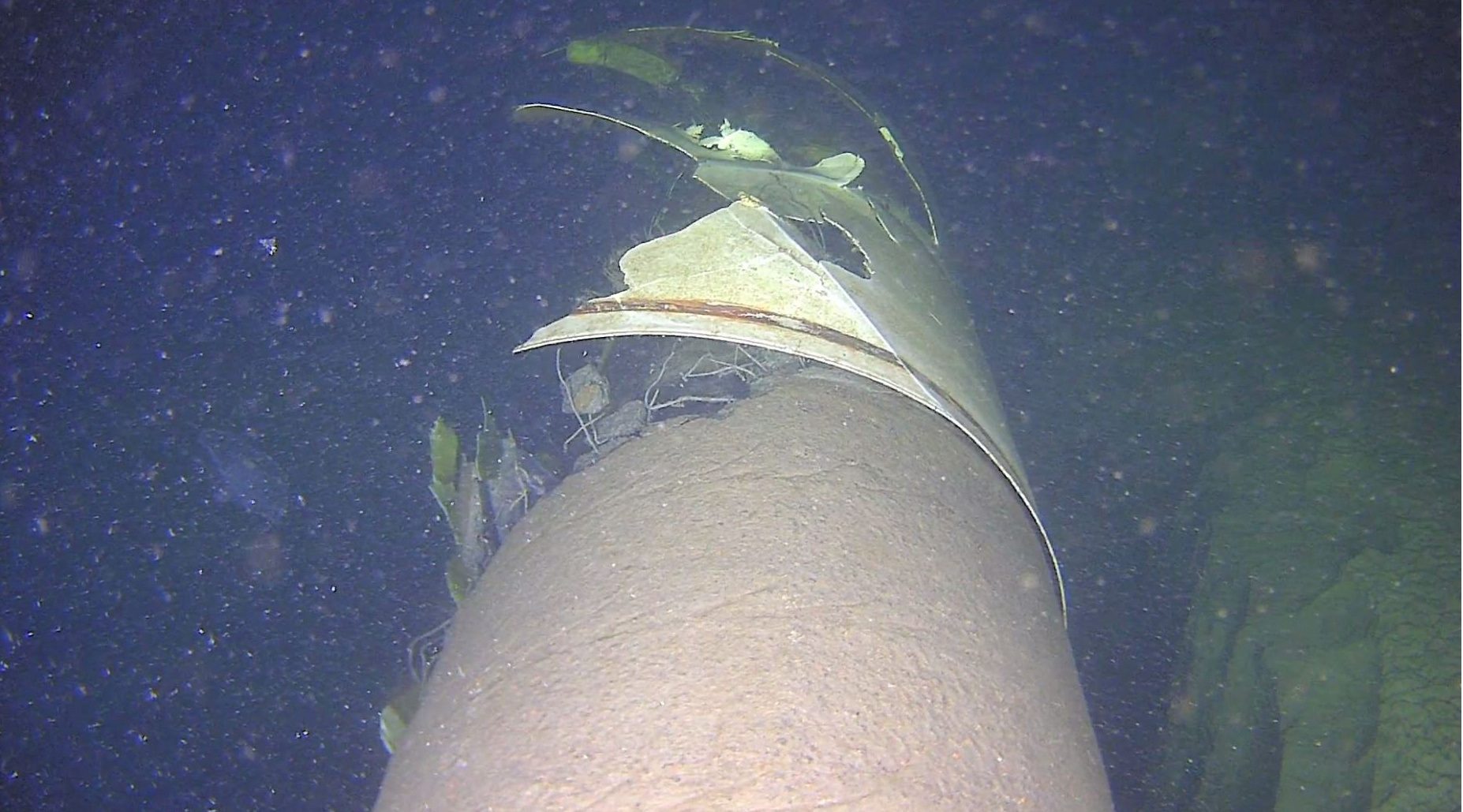 By Marianna Parraga
By Marianna Parraga
HOUSTON, Oct 1 (Reuters) – With flags and confetti, Venezuela launched three new oil tankers in the last 14 months that exemplify the socialist nation’s ambitions to diversify exports to Asian markets and give a helping hand to its political allies.
But the tankers from shipyards in Iran, Argentina and China, have never set sail, according to five sources with knowledge of the company’s fleet, as well as ship tracking data from Reuters showing the ships sitting where they were built.
Ship brokers, a source from state oil company Petroleos de Venezuela (PDVSA), and a shipbuilder offered an array of explanations for the delays ranging from lack of payment to manufacturing problems. But it is clear PDVSA’s push to replace and expand its fleet is stumbling.
The new tankers are part of deceased President Hugo Chavez’s plan to stimulate shipbuilding in Iran, China, Argentina and even Brazil in a broader effort to blunt U.S. power.
The three vessels are part of 42 tankers PDVSA ordered starting in 2006 to replace its fleet by the end of 2012. But only five of the tankers have set sail.
The delays mean higher freight costs for the financially strapped company. An internal report from March seen by Reuters said PDVSA leased 75 tankers. One contract signed this year showed PDVSA was paying $15,000 a day for a tanker, a broker who had seen the document said.
PDVSA’s plan was to cut leasing, which could amount to hundreds of millions of dollars a year at a time when PDVSA is struggling with falling output and tight cash flow.
Photographs published by Venezuelan embassies and government agencies more than a year ago show PDVSA officials and dignitaries at parties launching the medium-sized Eva Peron Aframax in Argentina and the Carabobo very large crude carrier (VLCC) in China. The Sorocaima was shown draped in ceremonial flags, floating in the water, in pictures by Iran’s Mehr news agency.
PDVSA’s latest annual report also trumpeted the launches.
“We finished the launch and floating of the Sorocaima … one of the four 113,000 tonnes Aframaxes being built by Iran. We programmed the launching of the Eva Peron for July 12th, 2012,” it said.
But the tankers never arrived. A lapse of more than a couple of months to register, test and deliver a ship after it is launched is highly unusual.
“When a vessel is launched to the sea, it is because it is ready,” said the president of the Venezuelan merchant marine officers’ association, Gustavo Gonzalez. “The delivery normally occurs 2-3 months after the launching.”
PDVSA did not comment on the reasons for the lack of deliveries.
STUCK IN DOCKS
Tracking data from Reuters and Marine Traffic, which include information on ship registrations and movements, show the three tankers never left their shipyards. At least two of the vessels have never turned on their satellite beacons.
Gonzalez, of the Venezuelan merchant marine group, said the delays might also stem from the fact that Venezuela gave the jobs to less advanced shipyards that cannot build tankers as fast as modern facilities that build them in 3 to 4 years.
Sebastian Aguilar, spokesman for the Rio Santiago shipyard in Argentina, confirmed delivery has not been made.
“The Eva Peron is still at the dockyard. It was launched in July 2012 and is currently in the last stage, getting equipment ready before its final delivery,” he said in a written response, without giving reasons for the apparent delay.
Aguilar added that a second Aframax for PDVSA, the Juana Azurduy, will be launched in the second half of 2014.
A PDVSA executive, who was not authorized to speak to the media, said the Argentine shipyard has not delivered the $70 million tanker on time.
Iran’s former commerce minister said in July that the Sorocaima, ordered in 2006, was “ready for delivery” at the Sadra dockyard in Bushehr, but did not elaborate.
The PDVSA executive did not explain why the vessel has not set sail, but said it was not for lack of payment.
Nevertheless, a report late on Monday by the Iranian news agency, Mehr, quoted the president of the Sadra shipyard as saying there is in fact a problem with Venezuelan payments for reasons the company does not know. He added that the company will not take legal action against PDVSA.
The third tanker that supposedly began operating last year, the Carabobo VLCC, ordered in 2010 from Chinese shipyard Bohai, was not ready when Venezuelan and Chinese officials held a christening event for it in September 2012.
“The Carabobo has not left China. It’s not ready for navigation. It’s not trading yet,” said a former employee of the shipping company that manages the vessel.
He added that the company – CV Shipping, a joint venture of PDVSA and Petrochina based in Singapore – normally meets delivery targets and there should be no problems because the tanker is being paid for with Venezuelan oil.
The office of the shipbuilder’s president said “no comment” and called the construction schedule a “commercial secret.”
The Venezuelan embassy in China called the Carabobo event a launch party, but the PDVSA executive said it was just a testing exercise for the vessel.
Despite the hold up with the Carabobo, the Bohai shipyard did deliver the tanker Ayacucho this year, the first in a batch of four that were ordered. It is the only VLCC that PDVSA operates on long routes to Asia, the former employee said.
USING TANKERS FOR STORAGE
Venezuela wants to diversify its export markets to replace the United States as its main customer, but switching to Asian markets brings higher transportation costs.
With only 20 ships of its own and not all of them seaworthy, the PDVSA fleet carried just a quarter of the 2 million barrels per day (bpd) of crude exported last year and 12 percent of the 500,000 bpd of refined products, the company’s annual report says.
PDVSA’s tight tanker situation has become more acute since 2012, when several fires and an explosion at its refineries damaged more than a dozen storage tanks. That has forced the company to use vessels to store oil.
“PDVSA will pay much more for freight in 2013, not including the misuse of part of its fleet and the inefficiency of some terminals,” a tanker broker who trades with PDVSA said. “This implies extra costs for delays and fines.”
Venezuelan Petroleum Minister Rafael Ramirez, who is also head of PDVSA, described the new course in March when receiving some new tankers from Japan.
“We are en route to managing 40 percent of our exports with our own fleet. The routes to China, Japan and India will become profitable,” he said.
But according to the tracking data, PDVSA is using most of the new tankers to move oil between local ports because of the poor state of its fleet, which includes eight idled Lakemaxes that once ran to the United States.
The latest runs of four new Japanese built Aframax vessels – the Yare, Tamanaco, Terepaima and Paramaconi – were between Caribbean islands where the company has storage tanks and refineries on the mainland, the tracking data shows.
“We were moored for nine days, waiting for directions because of crowded docks and slowed refineries,” a crew member of one of the Japanese built ships told Reuters.
Three other smaller multipurpose vessels, bought second hand by PDVSA unit Citgo in 2011, were anchored for more than a year while it tried to transfer them to another state company tasked with importing grains and petrochemicals.
One crew member said that, after being moored for so long, the ships had to be repaired before starting operations in 2012.
“They are improvising as usual,” he added.

 Join The Club
Join The Club











